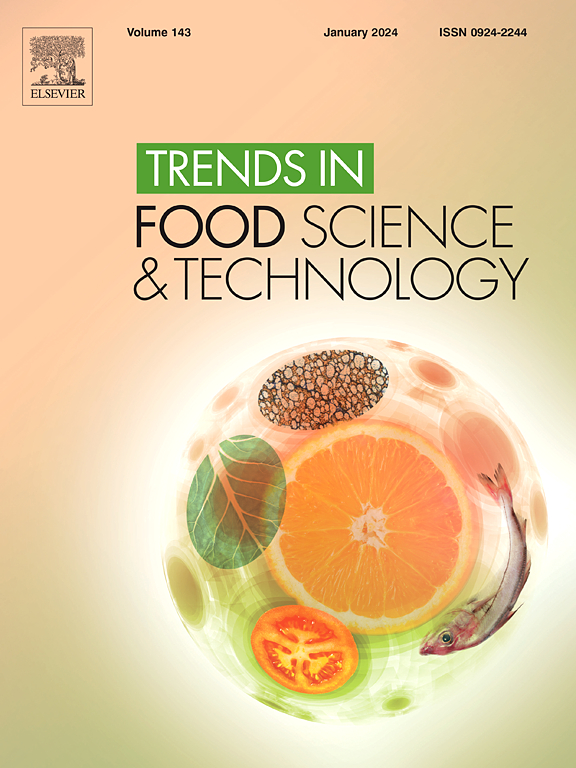DNA aptamer-crosslinked hydrogel sensor: Design, mechanism and application for food safety analysis
IF 15.1
1区 农林科学
Q1 FOOD SCIENCE & TECHNOLOGY
引用次数: 0
Abstract
Development of efficient detection strategies for food contaminants is essential for ensuring food safety and preventing foodborne disease. Despite their effectiveness, prevailing approaches face limitations such as complex instrumentation, prolonged process, high cost, and low sensitivity. DNA aptamers are promising novel recognition elements for food contaminants due to their high affinity and specificity for target substance. They can crosslink DNA-modified polymers through complementary base pairing to develop hydrogel sensors. The specific aptamer-target binding competes with aptamer-polymer crosslinking. This competition leads to hydrogel breakdown and a gel-sol transition, generating physical, chemical, electrical or other signals for target analysis. DNA aptamer-crosslinked hydrogel sensors offer significant advantages over traditional sensing techniques, including high accuracy, sensitivity, selectivity, rapid response and low cost. These attributes make them increasingly valuable for food safety analysis, especially for on-site and real-time monitoring. This review provides an insightful overview of the most recent advancements in DNA aptamer-crosslinked hydrogel sensors, focusing on their design, mechanism, applications in food safety analysis, important challenges and future research directions.
求助全文
约1分钟内获得全文
求助全文
来源期刊

Trends in Food Science & Technology
工程技术-食品科技
CiteScore
32.50
自引率
2.60%
发文量
322
审稿时长
37 days
期刊介绍:
Trends in Food Science & Technology is a prestigious international journal that specializes in peer-reviewed articles covering the latest advancements in technology, food science, and human nutrition. It serves as a bridge between specialized primary journals and general trade magazines, providing readable and scientifically rigorous reviews and commentaries on current research developments and their potential applications in the food industry.
Unlike traditional journals, Trends in Food Science & Technology does not publish original research papers. Instead, it focuses on critical and comprehensive reviews to offer valuable insights for professionals in the field. By bringing together cutting-edge research and industry applications, this journal plays a vital role in disseminating knowledge and facilitating advancements in the food science and technology sector.
 求助内容:
求助内容: 应助结果提醒方式:
应助结果提醒方式:


